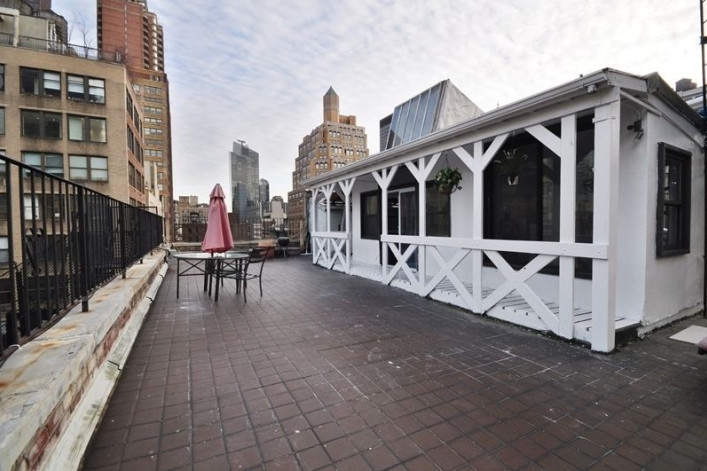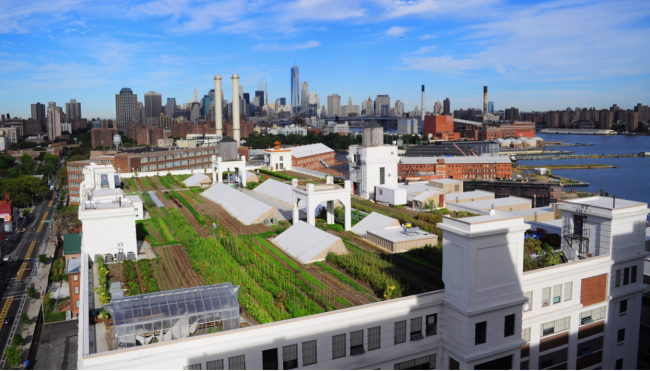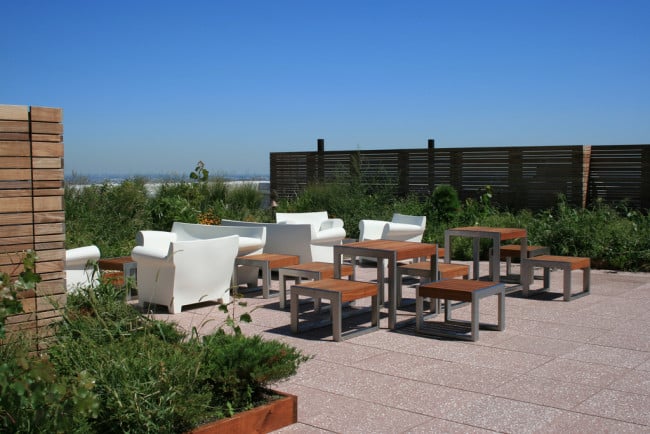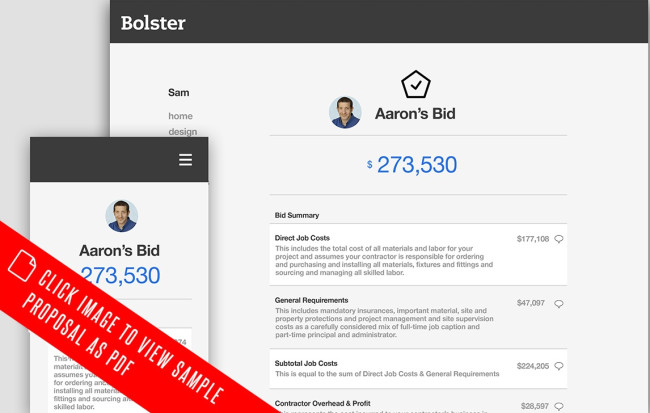Cozy cabins on NYC rooftops: How common are they and how can you get one?
With the arrival of winter, many of us are fantasizing about finding a cozy cabin to retreat to, somewhere far from the noise—and inevitable, deep slush puddles—of New York.
Now, it seems, you don't have to venture far at all to find a little sanctuary. Curbed spotted a listing for a $4,200 per month cabin that's actually in the heart of the city, on the rooftop of a building in the NoMad neighborhood.
According to the Keller Williams listing, the apartment—atop a ten-story, prewar rental building at 13 West 28th Street—is effectively a studio, with an open living area, an alcove for a bed, and a newly renovated bathroom and kitchen. Yes, $4,200 seems a bit steep for a studio, even in NoMad, but the cabin also comes with a wraparound roof deck and massive terrace with direct views of the Empire State Building. Plus, you'd be hard-pressed to find a place in Manhattan more private than this one.
This rooftop cabin isn't the only one of its kind: There are other sky-high hideaways where tenants are guaranteed to never hear upstairs neighbors stomping around or dragging furniture. In 2015, Gothamist discovered a cottage, complete with a bucolic-loooking front porch, at the top of a Greenwich Street building. (It turns out that the cottage is an extension of a more traditional loft apartment.)
Previously, Gothamist found another rooftop retreat, this one in the East Village, attached to a $4.4 million penthouse. And Inhabitat NYC has a slideshow featuring several more lofty NYC homes, including a rooftop A-frame on the Upper West Side and what looks like a suburban split level, complete with chimney, near Union Square.
One would think there might be some special concerns for these types of homes, given their position and NYC's often unpredictable weather. Larry Ubell, a structural engineer and president of Accurate Building Inspectors, says that as long as these structures are built with the correct permits and adhere to Department of Buildings guidelines, there shouldn't be any unusual problems.
"On the other hand, when they're built clandestinely and without permitting and people don't know what they're doing, just situating something on top of the roof system, that could be very hazardous," Ubell says.
The roof collapsing under the weight of heavy construction materials, or even people working on it, is the biggest risk. It's also possible that the roof might hold initially, but then buckle under the weight of extreme weather conditions. Before building anything on a roof, owners must determine that it's strong enough to support their planned additions. Ubell explains that prewar buildings often have steel beams that can bear rooftop loads, but other types of properties may require workarounds.
If you're an apartment or building owner with rooftop rights and you're interested in building your own living space up there, the city Department of Buildings has strict codes to follow. Be prepared to submit permit application forms, as well as mock-ups, renderings, and drawings of the proposed addition, signed by an architect or engineer. There's no guarantee you'll be approved, even if the roof is structurally sound: The DOB also considers the visual impact of an addition to the building, and whether it's in compliance with your local zoning codes.
You can expect, then, a lengthy and expensive process, but don't try to circumvent the DOB. "It's a problem when people try to do things on their own, which does tend to happen in this city," Ubell says. "It could cause the roof to collapse, especially with a good snowfall. You build it when everything is hunky-dory, but then the winter comes along. With climate change, a lot of places are getting ridiculous snowfall."
Snow alone can be enough to cause a roof to give: Back in 2014, there were reports of ten rooftop cave-ins throughout the tri-state area in the wake of a winter storm.
If you want to create a cozy rooftop cabin of your own, or purchase a pre-existing one, investigate to make sure that everything is above-board and that the structure is adequately supported. "It's incumbent for anyone buying to make sure that the property has been permitted and there are certifications for that extension on file. It's easy to do—you look through the DOB filing history online. If you don't see it, question it at the very least," Ubell advises.
You Might Also Like































